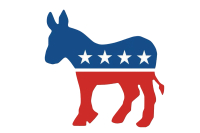Cherokee from the heart: Beloved Woman reflects on a wandering life rooted in Cherokee language
If anyone ever had an excuse to leave her hometown and never return, it would be Myrtle Driver Johnson.
Born May 21, 1944, to a mother who didn’t want her, Johnson had a hard upbringing in the Big Cove community of the Qualla Boundary. While her younger siblings — one brother and four sisters — lived with her mother and their father, Johnson, who never knew which of two men her father was, was sent to live with her grandparents.
Council pledges support for extending language immersion program
 With the school year nearing its midpoint, sixth-graders at New Kituwah Academy in Cherokee are starting to ask an increasingly urgent question: Will I have to change schools next year?
With the school year nearing its midpoint, sixth-graders at New Kituwah Academy in Cherokee are starting to ask an increasingly urgent question: Will I have to change schools next year?
Cherokee immersion school aims to save language
The Eastern Band of Cherokee Indians praised the new Kituwah Language Academy for the cultural renaissance that’s now unfolding within its doors.
The official ribbon cutting ceremony last Wednesday (Oct. 7) for the language immersion school’s opening led many speakers to break down in tears of happiness over the historic step forward in preserving the Cherokee language, while recalling with sorrow past efforts to stamp out that cornerstone of their culture.
“Our people were made to feel ashamed of our native language,” said Dan McCoy, former chairman of the Tribal Council and a parent of an immersion student. “This is a day in history. It’s a resurrection of our language, our culture.”
McCoy characterized staff at the school as “Cherokee heroes.” The significance of reawakening the Cherokee language was not lost on anyone who attended the ceremony.
“If we lose our language, we cease to exist as Cherokee people,” said Renissa Walker, manager of the Kituwah Preservation and Education Program and an immersion parent.
Walker reminded the crowd that in the past, Cherokee girls’ heads were shaved and boys were forced to wear dresses every time they spoke the language at boarding schools they were coerced into attending.
Though the stories Walker told were somber reminders of past injustices, her overall message was optimistic.
“The fire that represents our language and heritage was at risk of being extinguished, but there is hope,” said Walker.
At the ceremony, Principal Chief Michell Hicks said the tribe has made amazing progress, overcoming former government leaders’ attempts to obliterate the Cherokee language and culture.
“This is not just a beautiful facility, but we’ve completed a circle,” said Hicks. “It’s not a matter of we show them that they are wrong. It’s a matter of strength and perseverance ... I believe we have put our best foot forward.”
Hicks said he hoped he’d still be alive to see the very first children graduate from the academy.
Revitalizing the language
The language immersion program, which started in 2004, moved to the new $6.8 million building in September with more than 30 students in tow. For now, the students range from 2-year-olds to kindergarteners, but the school plans to add a new grade each year, eventually accommodating children from birth to the fifth grade.
A sense of urgency sped up the building’s creation since currently there are only 300 remaining fluent speakers, a select group that has an average age of 53. The Cherokee community here is losing about three speakers every two months.
After accounting for holidays, weekends, and other time spent outside the school, the academy estimates that children in the immersion program spend about 20 percent of their time in a Cherokee-only environment. The school wanted to move to a separate facility to avoid English interference.
Walker is not worried that the students will become any less versed in English since 80 percent of their time will still be spent in an English-speaking environment.
The goal now is to not only see the children in the language immersion program become bilingual in Cherokee and English, but also to grow up to become leaders in the tribe. Though that may be years away, the children are already making steady progress.
They are not only able to say “Hey, how are you?” or sing a song, said Gilliam Jackson, administrator for the academy. They can sit in a sandbox, chatting with each other in Cherokee, describing the sky or the clouds. Some 2-year olds are even teaching the Cherokee language to mom and dad.
“We’re very hopeful that these children are going to grow into true Cherokee people who have a sense of what it means to be Cherokee,” said Walker.
Walker added that many Cherokee kids relate more to pop culture than to their original roots.
The building itself
The 32,000-square-foot academy has 15 classrooms, four outdoor play areas, 10 offices, and a workroom where children’s books will be translated into Cherokee.
Kituwah Language Academy will also be used for speakers, gatherings, online classes, a training center for language teachers, parent language classes, cultural events, and summer language camps for youth. Construction on the building began in October 2008 and concluded last month.
The preschool portion of the Academy is licensed with the state, through the North Carolina Department of Child Development, while the elementary portion of the academy is regulated in partnership with Cherokee Central Schools.
Though Cherokee will be the predominant language of instruction, students will also be required to take an English class similar to those taught at traditional schools.





